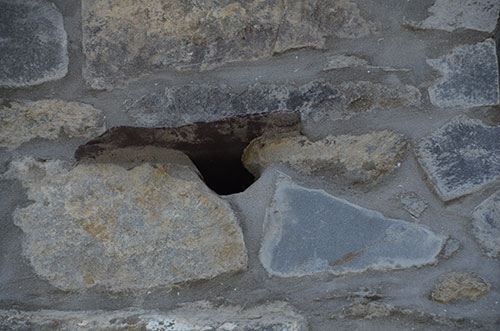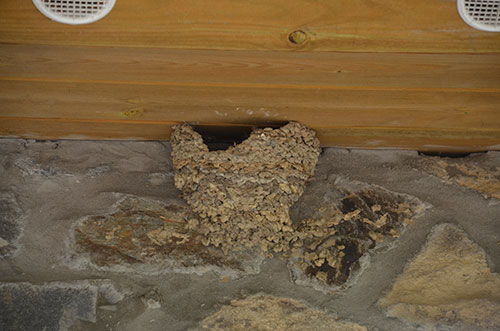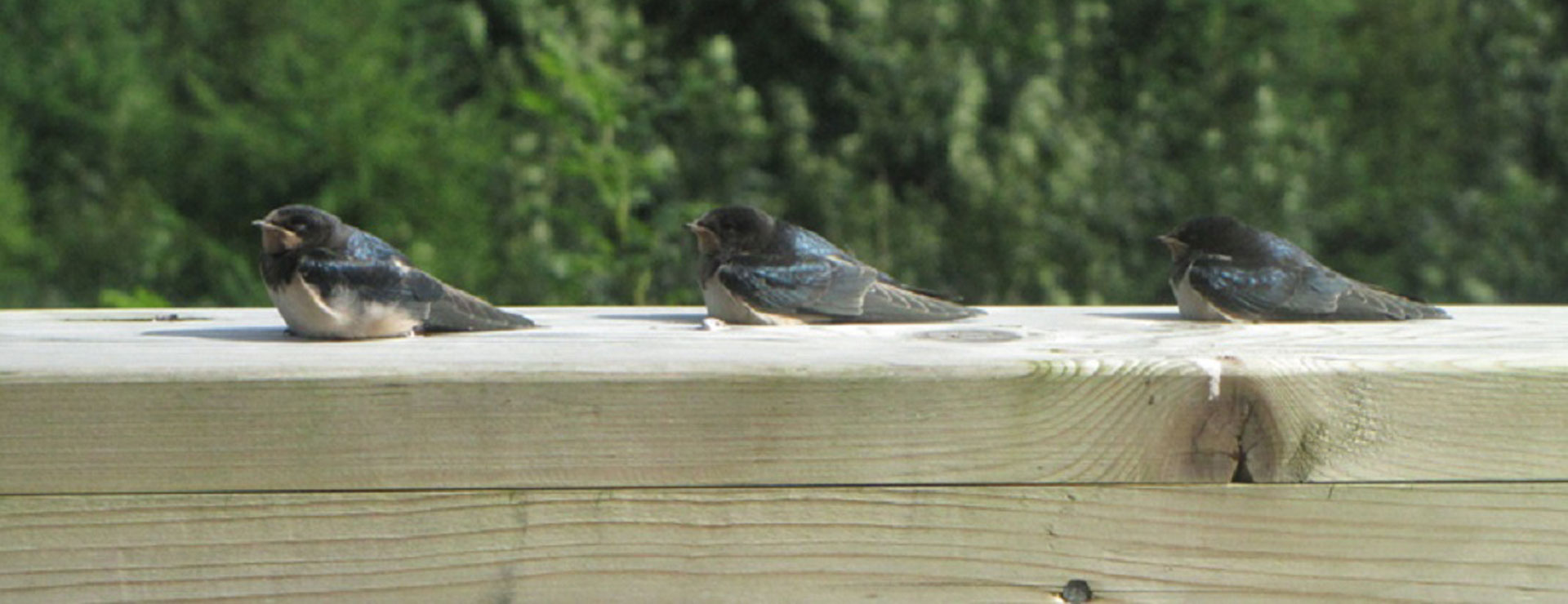Buildings for birds and bats

We’ve built six new buildings here at the farm over the years. To design buildings requires fitting each one into its location and aspect, so that it sits comfortably, both in the landscape, and within itself. Then we look at sustainability and try to design for a 300 year lifespan. We try to manage energy by using plenty of insulation, providing geothermal underfloor heating and placing solar panels discreetly on roofs designed to face south. But we also try to design them so that other wildlife apart from us can use them. All our buildings are built on the footprint of previous dilapidated buildings, some of which had previously been colonised by swallows and so on. So we wanted to ensure that they too still had homes to come back to each spring.
It doesn’t take much to make buildings suitable for birds, either in the original design or retrospectively. When we are putting on a roof, we try to provide a good overhang. This not only shelters the wall below, but also provides big eaves for nesting birds. Sometimes we put up mesh cups that provide secure supports for house martins and swallows. Even within their first year, buildings can quickly host several pairs of martins or swallows and if their droppings are inconvenient, we place an old slate or board underneath until the young leave.
Hollows can be left in the stone walls or even large glass containers embedded. House sparrows and blue tits use these, while sometimes the wrens use them for shared winter roosts. Hollows and crevices like this are just what these species need, but are missing from so many new-builds nowadays.
Ivies and creepers on the wall provide both roosts and nest sites, especially for sparrows and blackbirds. Sometimes they come and go right under your nose, without anyone noticing. Of course, you can put up traditional nest boxes as well, but try to think like a bird and place them discreetly where the home-makers will feel secure.

Jackdaws try each spring to nest in the chimneys, so we mesh these off. Instead a few nest boxes strategically placed give them an opportunity where they won’t be a nuisance. Turf roofs are great for the birds because they are safe from ground predators, especially the ubiquitous cats. Two of our roofs host wagtails, sometimes two broods each year. Our roofs are made from turfs dug up from the fields and just put in place from the front bucket of a tractor. The result is a rough tussocky sward which the wagtails tunnel into to make their nests.
Some of our roofs have small trees and shrubs growing on them, especially on the north sides that are more shaded. The south sides often have lichens, and in a dry summer sometimes birds will dust bathe in little scrapes.
The turf helps keep the roof at an even temperature and bats quickly find little crevices for crawling into, appearing magically at sunset to take over the night shift. Feathered oak lapboard walls distort slightly as they weather, and this turns a whole wall into one great big bat box.

Owl boxes can also be built into new buildings, especially agricultural ones. Nest sites both for Barn Owls and for Kestrels are limiting in many parts of Britain nowadays and it doesn’t take much to site a box in a quiet corner of the farm to accommodate them.
A lot of trouble and money is spent protecting existing buildings that contain bat roosts. Church wardens are driven mad by bats making churches unusable and causing deterioration of the fabric of the buildings. Protective legislation and expensive surveys are all very well, but equally, try thinking proactively. It doesn’t take much to make a building suitable for symbiotic wildlife. Even if you live in a town you can do it. And you feel so proud when you glance up one day and see that your efforts have been rewarded, and you have been ‘adopted’.
You might think this is small stuff, not a ‘proper’ conservation project. Projects don’t need to be grandiose. With animals, ‘little and often’ is so often the remedy. You may not have wolves at the bottom of your garden but when spring comes, and an excited twittering shows that a pair of swallows has returned all the thousands of miles from Africa just to single out your house, which is their home, who can fail to feel privileged? The cry goes up: ‘Our friends from Africa are back! Spring is here!’
